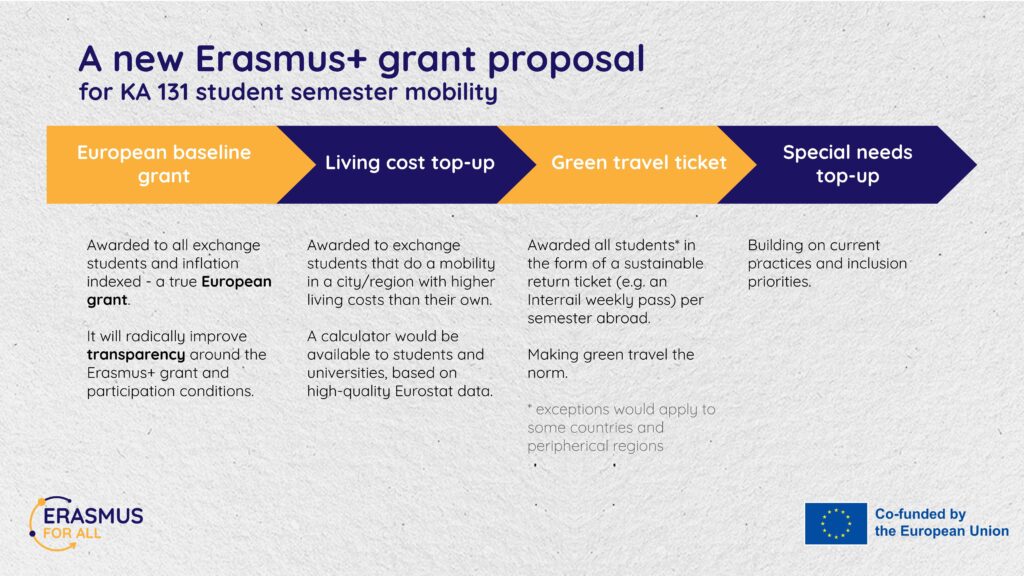On September 25, over 130 representatives from 35 European University Alliances participated in an online session hosted by the Erasmus for All partnership. This event aimed to discuss the conclusions of the report, Removing the Main Obstacles to European Student Mobility. The session focused specifically on how these conclusions apply to the Alliances, sparking a lively exchange of ideas on the challenges, ambitions, and the Erasmus for All grant calculation proposal to create a more inclusive and accessible mobility programme for all students.
With the majority of attendees (60%) involved in student mobility administration, funding emerged as a predominant challenge in encouraging students to pursue in-person mobility. Approximately 47% of respondents noted that students’ financial constraints emerged as one the biggest obstacles to pursuing a mobility experience.
Participants were generally in favour of a proposed shift in grant calculation from a national to a European approach. When asked to rate this change on a scale of 1 to 5, nearly 80% selected a score of 4 or 5, leading to an overall rating of 3.9. Many participants shared their positive views on this new approach:
- “It will make mobility more inclusive and clear to all sides involved.”
- “This would allow us to address the variety of countries present in the alliance.”
- “It will definitely increase the number of student mobilities.”

The Erasmus for All grant proposal
Additionally, more than half of the participants (53%) believed that the Erasmus for All proposal would positively impact the implementation of mobility within Alliances. However, some expressed concerns, with 8% highlighting that the overall budget might limit mobility opportunities if the changes are not accompanied by increased funding.
A prominent topic of discussion was the ambitious goal for Alliances to have 50% of their students participate in mobility programmes. While many participants support the drive to increase mobility, concerns were raised about the feasibility of this target under current conditions. Some participants remarked:
- “Less mobilities, with higher funding for every single mobility. The objective of 50% is totally not grounded in reality.”
- “Lower the 50% target and focus on quality instead of quantity.”
The most common suggestions for improving the system included the need for increased funding and the removal of administrative obstacles. Furthermore, participants emphasised the importance of providing clear information to students and streamlining processes to facilitate mobility participation.
As the Erasmus for All project moves toward its final stages, including the publication of policy recommendations and the upcoming final conference on October 9, it is clear that Alliances are committed to supporting the Erasmus for All proposal. However, for this vision to fully materialise, more funding and a realistic approach to mobility targets will be essential to ensure that the next generation of students can benefit from truly inclusive and accessible Erasmus+ opportunities.
Cover image by freepik

